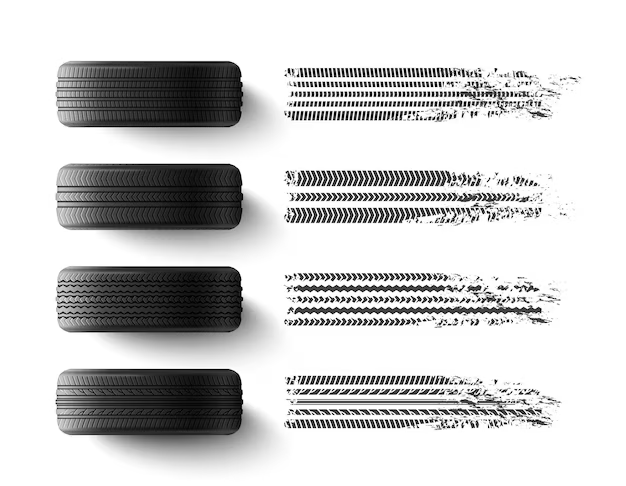In today’s digital age, the convenience of purchasing tyres online has revolutionized the automotive industry. No longer do you need to spend hours at a dealership or local tire shop, waiting for assistance. Instead, a wide array of tire options is just a click away, allowing you to compare prices, read reviews, and make an informed decision from the comfort of your home. This article will explore the benefits of buying tires online, how to choose the right ones for your vehicle, and the importance of flat tire service.
The Shift to Online Tire Shopping
The internet has transformed many aspects of our lives, and shopping for tires is no exception. Purchasing tyres online offers several advantages:
-
Convenience: Online shopping allows you to browse various tire brands and models at any time, without needing to visit multiple stores.
-
Comparison Shopping: You can easily compare prices, features, and reviews to find the best tire for your needs.
-
Better Deals: Online retailers often offer competitive prices and discounts that you might not find in physical stores.
-
Wide Selection: You have access to a broader range of tires, including specialty and hard-to-find models.
-
Doorstep Delivery: Many online tire retailers offer home delivery, making the process even more convenient.
How to Choose the Right Tires
Selecting the right tires for your vehicle involves considering several factors. Here’s a step-by-step guide to help you make the best choice:
1. Understand Your Needs
Different driving conditions and preferences require different types of tires. Consider the following:
-
Weather: If you live in an area with extreme weather conditions, you might need winter tires or all-season tires.
-
Driving Habits: If you drive long distances frequently, durability and comfort are crucial. For off-road adventures, consider all-terrain tires.
-
Vehicle Type: Your car’s make and model can significantly impact the type of tires you need.
2. Check Tire Specifications
Every vehicle comes with manufacturer-recommended tire specifications, usually found in the owner’s manual or on a sticker inside the driver’s door. Pay attention to:
-
Tire Size: Includes width, aspect ratio, and diameter.
-
Load Index: Indicates the maximum weight the tire can support.
-
Speed Rating: The maximum speed a tire can safely maintain.
3. Read Reviews
Customer reviews can provide valuable insights into a tire’s performance, durability, and comfort. Look for patterns in reviews to identify any common issues or praises.
4. Compare Prices
While price shouldn’t be the sole factor in your decision, it’s essential to compare prices across different retailers. Remember to account for shipping costs and any additional fees.
Installing Your New Tires
Once you’ve purchased your tires online, you’ll need to have them installed. Most online tire retailers have partnerships with local tire shops and service centers, allowing you to choose a convenient location for installation. Ensure the installation includes balancing and alignment to prolong the life of your new tires.
Understanding Flat Tire Service
Despite your best efforts to maintain your tires, flat tires are an inevitable part of driving. Knowing how to handle a flat tire and utilizing flat tire service can save you time and hassle.
What is Flat Tire Service?
Flat tire service involves professional assistance in repairing or replacing a flat tire. This service is often provided by roadside assistance companies, tire shops, and even some insurance plans. It includes:
-
Tire Repair: Fixing the puncture or damage if possible.
-
Tire Replacement: Installing a spare tire or a new tire if the damaged one cannot be repaired.
-
Tire Inflation: Ensuring the tire is properly inflated to the manufacturer’s specifications.
When to Use Flat Tire Service
You should consider using flat tire service in the following situations:
-
Safety Concerns: If you’re in a dangerous location or adverse weather conditions, it’s safer to call for professional help.
-
Lack of Equipment: If you don’t have the necessary tools to change a tire, professional service is essential.
-
Inexperience: If you’re not confident in your ability to change a tire, it’s better to rely on experts.
Steps to Take When You Have a Flat Tire
If you find yourself with a flat tire, follow these steps:
-
Pull Over Safely: Find a safe spot away from traffic to stop your vehicle.
-
Turn on Hazard Lights: This alerts other drivers to your situation.
-
Assess the Damage: Determine if the tire can be repaired or needs to be replaced.
-
Call for Assistance: If needed, contact a flat tire service provider for help.
-
Use a Spare Tire: If you have a spare and the necessary tools, you can replace the flat tire yourself. Ensure you follow proper procedures to avoid injury.
Preventing Flat Tires
While flat tires can’t always be avoided, there are steps you can take to reduce the risk:
-
Regular Inspections: Check your tires for signs of wear, damage, and proper inflation.
-
Avoid Hazards: Steer clear of potholes, debris, and rough roads when possible.
-
Proper Inflation: Ensure your tires are inflated to the recommended pressure to prevent overloading and overheating.
-
Tire Rotation: Regularly rotate your tires to ensure even wear.
The Future of Tire Technology
As technology continues to advance, so does the tire industry. Innovations in tire design and materials are improving safety, performance, and durability. Some trends to watch for include:
-
Self-Sealing Tires: These tires contain a sealant that automatically fills punctures, reducing the need for immediate repairs.
-
Run-Flat Tires: Designed to be driven on for a short distance even when flat, allowing you to reach a safe location.
-
Smart Tires: Equipped with sensors to monitor tire pressure, temperature, and tread wear, providing real-time data to drivers.
Conclusion
Buying tyres online offers unparalleled convenience and access to a wide range of options, allowing you to make an informed decision without leaving your home. Understanding the importance of flat tire service and knowing how to handle a flat tire can save you time and stress on the road. By following the guidelines provided, you can ensure you choose the right tires for your vehicle and stay prepared for any tire-related issues that may arise.
Additional Tips for Online Tire Shopping
While the primary focus of this article has been on the convenience and benefits of buying tyres online, there are additional tips to ensure a smooth and successful experience:
Verify the Seller’s Reputation
Before making a purchase, research the online retailer’s reputation. Look for reviews and ratings on independent websites to ensure they are reliable and provide quality customer service.
Check for Warranties
Many tires come with manufacturer warranties that cover defects and premature wear. Ensure you understand the warranty terms and what is covered. Additionally, some online retailers offer their own warranties or protection plans.
Consider the Total Cost
When comparing prices, factor in any additional costs such as shipping, installation, and disposal fees for your old tires. Some retailers offer free shipping or discounted installation services, which can significantly affect the overall cost.
Take Advantage of Promotions
Online tire retailers frequently offer promotions, discounts, and seasonal sales. Sign up for newsletters or follow them on social media to stay informed about special deals. Using these promotions can help you save money on your purchase.
Read the Return Policy
Understand the return policy before making a purchase. In case you receive the wrong tires or are not satisfied with your purchase, knowing the return process and any associated costs is crucial.
Exploring Different Types of Tires
The tire market is vast, with various types designed to meet specific driving needs. Here’s an overview of some common tire types:
All-Season Tires
All-season tires are designed to provide a balanced performance in various weather conditions, including wet and dry roads. They are a popular choice for many drivers due to their versatility and year-round usability.
Winter Tires
Winter tires, also known as snow tires, are specifically designed for cold weather and snowy or icy conditions. They feature deeper treads and softer rubber compounds to enhance traction and safety during winter months.
Summer Tires
Summer tires are optimized for warm weather conditions and provide superior handling and performance on dry and wet roads. They are not suitable for cold or snowy conditions.
All-Terrain Tires
All-terrain tires are designed for both on-road and off-road driving. They offer a balance of durability, traction, and comfort, making them ideal for SUVs and trucks used in various terrains.
Performance Tires
Performance tires are designed for high-speed handling and responsiveness. They provide excellent grip and stability, making them ideal for sports cars and performance-oriented vehicles.
DIY Tire Maintenance Tips
Regular tire maintenance is essential for safety and longevity. Here are some DIY tips to keep your tires in top condition:
Check Tire Pressure
Maintaining the correct tire pressure is crucial for safety and fuel efficiency. Use a tire pressure gauge to check your tire pressure at least once a month and before long trips. Refer to your vehicle’s manual for the recommended pressure.
Inspect Tread Depth
Worn-out treads can compromise your vehicle’s handling and safety. Use a tread depth gauge or the penny test to check the tread depth. If the tread is too shallow, it’s time to replace your tires.
Look for Damage
Regularly inspect your tires for cuts, punctures, or bulges. Any visible damage should be addressed immediately to prevent blowouts or other issues.
Rotate Tires
Rotating your tires helps ensure even wear and extends their lifespan. Follow your vehicle manufacturer’s recommendations for tire rotation intervals, typically every 5,000 to 7,500 miles.
Balance and Align
Proper wheel balancing and alignment are essential for a smooth ride and even tire wear. Have your tires balanced and aligned according to your vehicle’s maintenance schedule or if you notice any handling issues.
The Importance of Professional Tire Services
While DIY maintenance is essential, professional tire services play a crucial role in ensuring your tires perform optimally. Here’s why professional services are important:
Expert Knowledge
Professional technicians have the expertise to identify and address tire issues that you might overlook. They can recommend the best tires for your vehicle and driving conditions.
Advanced Equipment
Tire shops use specialized equipment for mounting, balancing, and aligning tires. This ensures precise installation and optimal performance.
Safety
Professionals follow industry standards and safety protocols, ensuring your tires are installed and maintained correctly. This reduces the risk of accidents caused by tire failure.
Comprehensive Services
Professional tire services often include additional checks and maintenance, such as brake inspections, suspension checks, and fluid top-offs, ensuring your vehicle is in top condition.
Conclusion
Embracing the convenience of buying tyres online and understanding the importance of flat tire service can significantly enhance your driving experience. By following the tips and guidelines provided in this comprehensive guide, you can make informed decisions, maintain your tires effectively, and stay prepared for any tire-related challenges. Whether you’re a seasoned driver or a novice, this knowledge will help you navigate the world of tires with confidence and ease.




